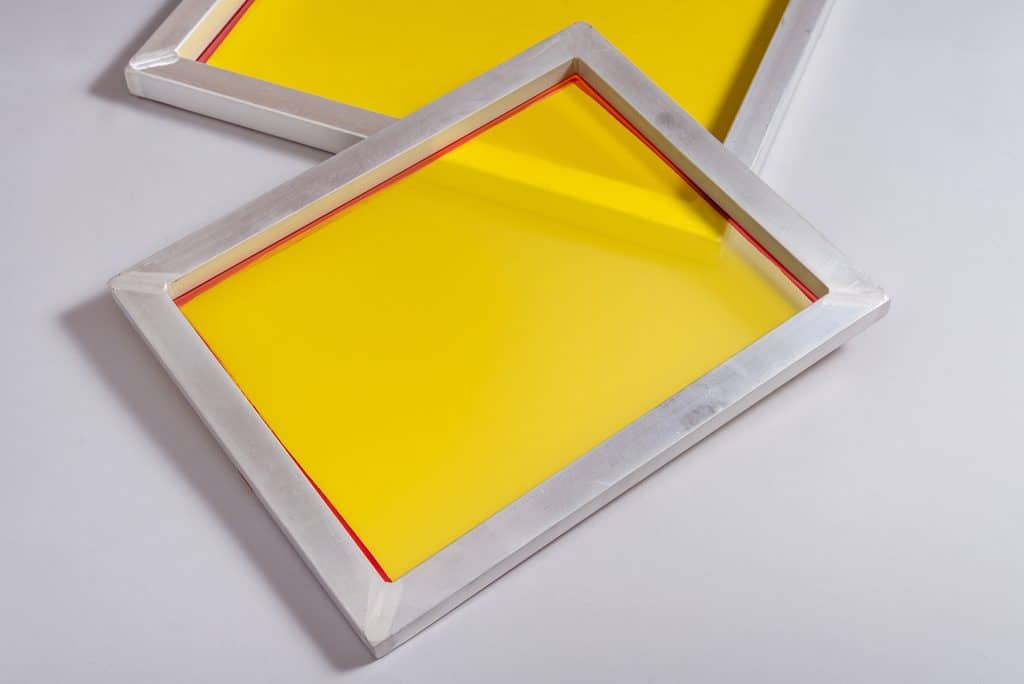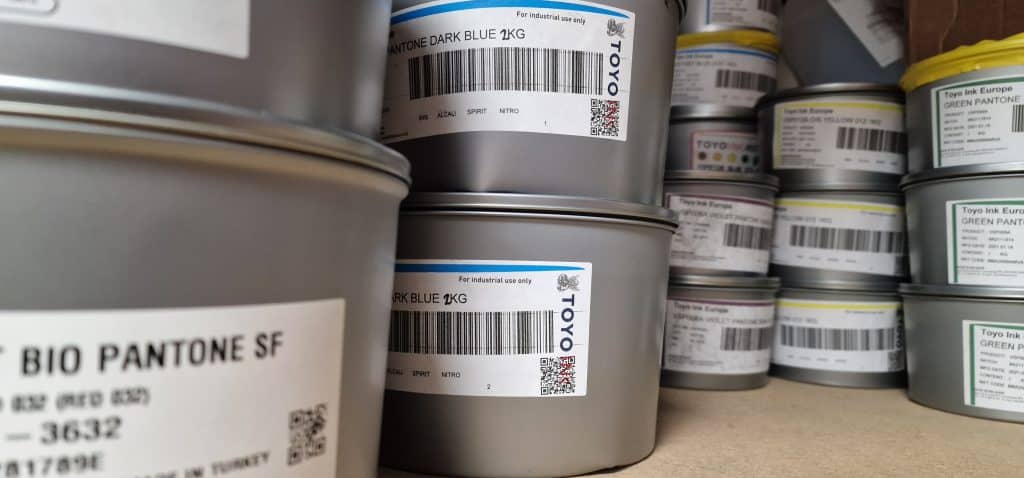What is Screen Printing?
Screen printing is a popular method of printing used to create designs on various surfaces, including t-shirts, posters, and promotional materials. Screen printing is also often used in engineering, electric and automotive industries for control panel covers and surfaces. The reason screen printing is chosen for this is because of its flexibility and durability alike. It can be used where other applications are not suitable, for example you require hard wearing, mechanical resist properties.
Screen printing involves using a mesh screen to transfer ink onto the desired surface, resulting in a crisp and vibrant design. However, the quality of the screen and ink used can greatly impact the final product. In this article, we will discuss the importance of using a good screen and ink to create high-quality screen prints.

The Screen
The screen used in screen printing is typically made of a mesh material, such as polyester or nylon, that is stretched tightly over a frame. The mesh size can vary depending on the desired print quality and the type of ink being used. A good screen is essential for achieving clean, sharp prints that accurately reproduce the design.
One of the most important factors to consider when selecting a screen is the mesh count. The mesh count refers to the number of threads per inch in the screen. A higher mesh count will produce finer, more detailed prints, while a lower mesh count will result in bolder, more opaque prints. The lower the mesh count the more ink coverage you have for solid areas, the higher the mesh count the less ink but more ability to do fine text and tones. However, using a screen with too high or too low a mesh count can lead to problems such as ink bleed or poor ink coverage.
The quality of the screen material is also important. A screen that is stretched too tightly or is made of a low-quality material can lead to uneven ink distribution and a blurry, poorly defined print. It is also important to properly care for and maintain the screen, as damage or wear and tear can result in subpar prints.
Screen Ink

In addition to a good screen, using high-quality ink is also essential for achieving vibrant, long-lasting screen prints. There are many different types of inks available for screen printing, each with its own unique properties and benefits. Using screen inks also gives you the ability to mix bespoke colours with almost perfect results. Different inks such as solvent, UV and two packs give you the ability to achieve adhesion on almost any surface which is the main advantage over digital printing.
Another important factor to consider when selecting ink is its durability. Screen prints are often subjected to wear and tear, so it is important to use an ink that will stand up to repeated washings and use. In addition, some inks are designed to resist fading, which is especially important for prints that will be exposed to sunlight or other environmental factors.
Finally, the colour accuracy of the ink is also important. A high-quality ink will accurately reproduce the colours of the original design, resulting in a print that is true to the intended design.
Overlays, or fusion graphics as they are also known, are frequently printed with the image under the surface, this to provide further durability as the nature of the product often means they undergo harsh conditions and significant wear-and-tear.
Adopting screen printing as the chosen method also means there is the flexibility to create complex shapes, clear windows, and in some instances anti-glare coatings, which make the fascia easier to read and operate. These items are mostly printed onto materials such as Polyester, Polycarbonate and PVC - all of which have varying properties which may be beneficial, depending on your project.
Screen printing also offers the option of printing directly onto control and electronic chassis panels. This is achieved using specialist 2-part inks which are stove oven dried so they harden. This method can make for a robust and cost-effective option when decorating panels.
In conclusion, using a good screen and ink is essential for achieving high-quality screen prints. The screen mesh count and material, as well as proper care and maintenance, are important factors to consider when selecting a screen. When selecting ink, opacity, durability, and colour accuracy are all important factors to consider. By using high-quality materials and taking the time to properly prepare and maintain the screen and ink, screen printers can achieve beautiful, vibrant prints that accurately reproduce their designs.
Speak to the YPS team on 0191 256 6889 for more information on Screen Print Services or fill in the contact form below.
